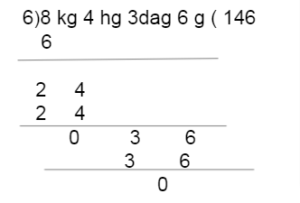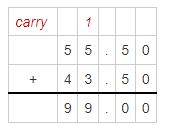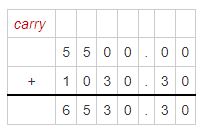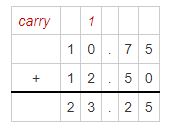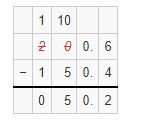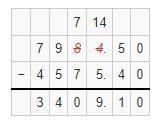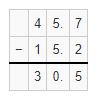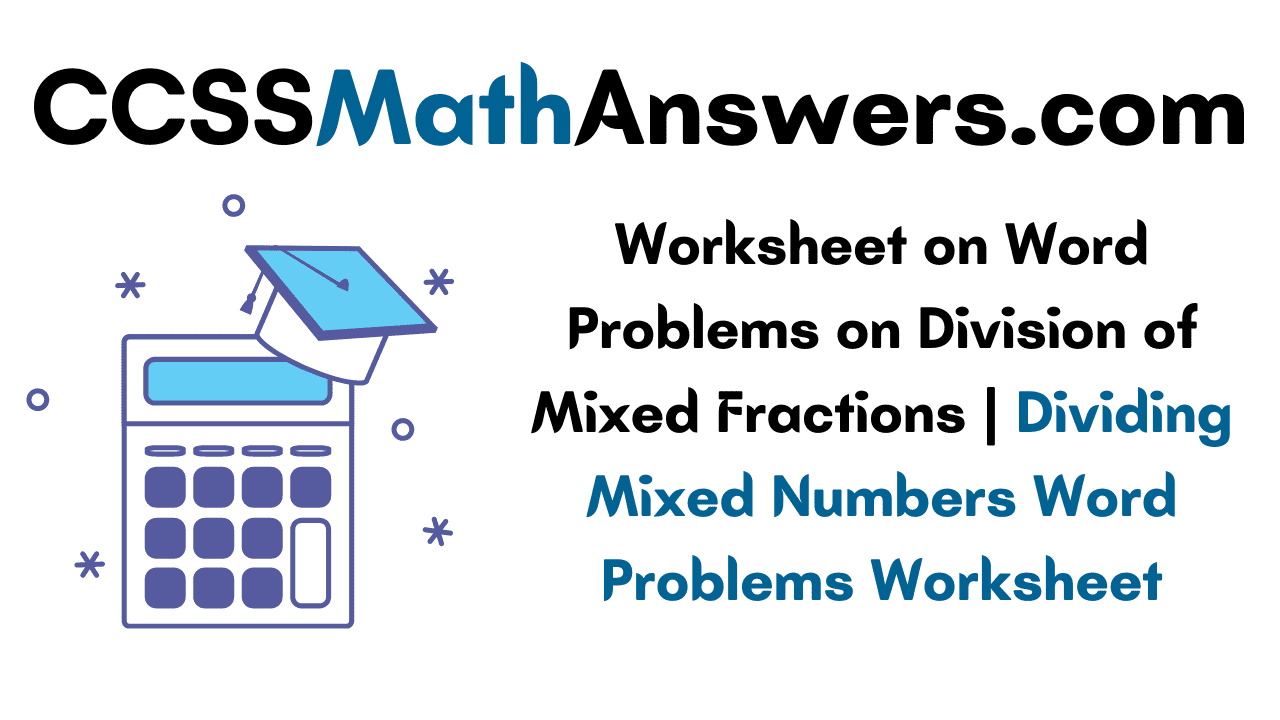Practice the questions in the Worksheet on Area for different shapes such as Square, Rectangle, Triangle, Circle, Quadrilateral, Polygons, etc. Amount of surface that a plane figure covers is known as Area. Learn the problem-solving approach used in the Area Worksheets over here and try to apply this knowledge to solve the problems you face in your exams. Firstly, try to solve the questions on your own and assess where you stand in your preparation.
Do Check:
Example 1.
Find the area of the rectangle of length 12 cm and breadth 15 cm?
Solution:
The Length of the rectangle=12 cm
The breadth of the rectangle=15 cm
Area of the rectangle=12 × 15
=180
Therefore the area of the rectangle=180 cm.
Example 2.
Find the length of the agriculture field area 200sq.m and breadth is 10 cm?
Solution:
Area of the agricultural field =200 sq.m
The breadth of the agricultural field = 10 cm
The length of the agricultural field=200/10=20 cm
Therefore, the length of the agricultural field is 20 cm.
Example 3.
Calculate the area of the floor of a square-shaped room which is made up of 70 square tiles of side 18 cm?
Solution:
Area of one tile=18 × 18=324 sq inches.
we know that the area of the floor has 70 tiles.
The area occupied by 70 tiles in the floor area=70 × 324=22,680 square inches.
Therefore, the area of the floor of the room=22,680 sq m.
Example 4.
The area of the square-shaped object 2500 cm2. What is the length of its side?
Solution:
The area of the square-shaped object =2500 cm2
We know that A= side2
So side=\(\sqrt{ Area} \)
=\(\sqrt{ 2500} \)
=50 cm
Therefore, the length of the side of the square-shaped object is 50 cm.
Example 5.
Find the area of the square whose diagonal is 6 cm?
Solution:
Given Diagonal is 6.
Area of the square when its diagonal is given by D2/2.
=62/2
=18
Therefore, the area of the square is 18 sq units.
Example 6.
Find the area of the painting square board of side 18 cm?
Solution:
The side of the painting board is 18 cm
The area of the painting square board is 182
=324
Hence, the area of painting square board is 324 sq units.
Example 7.
How much money required for tiling the room 48 m long and 53m wide at the rate of 20 per sq m?
Solution:
Length of the room=48
Width of the room=53
Area of the room=48×53 =2544.
The money for tiling the room per square meter =20
The money required for tiling the room =2544 × 20
=50880
Hence, the money required for tiling the room is 50880.
Example 8.
What is the area of the rectangular board of length 62 m and 65 m wide?
Solution:
length of the rectangular board=62 m
Width of the rectangular board=65 m
Area of the rectangular board=62 × 65
=4030
Therefore, the area of the rectangular board is 4030 sq m.
Example 9.
Find the area of the square of the side 23 m?
Solution:
The side of the square =23 m
Area of the square=23 × 23=529
Hence, the area of the square=529 sq m.
Example 10.
Find the area of the rectangle when
1) length=2 m 30 cm, width= 40 cm
2) length=5 m 20 cm , width= 20 cm
Solution:
1) Length of the rectangle=2m 30 cm=2 × 100 +30 cm=230 cm
width of the rectangle= 40 cm
Area of the rectangle=230 × 40= 9200 sq cm
Hence, the area of rectangle=9200 sq cm.
2) Length of the rectangle=5 m 20 cm=5 × 100 + 20 cm=500+20 cm=520 cm
width of the rectangle=20 cm
Area of the rectangle=520 × 20= 10400 sq cm.
Hence, the area of rectangle=10400 sq cm.


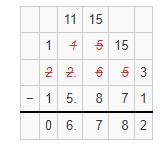
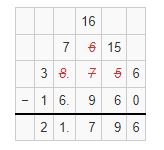
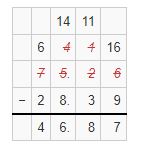
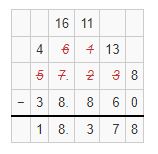
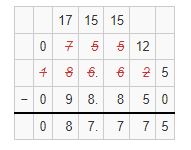
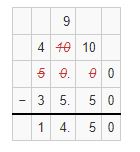
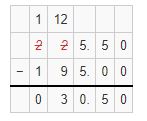
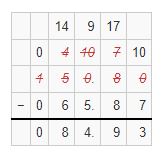
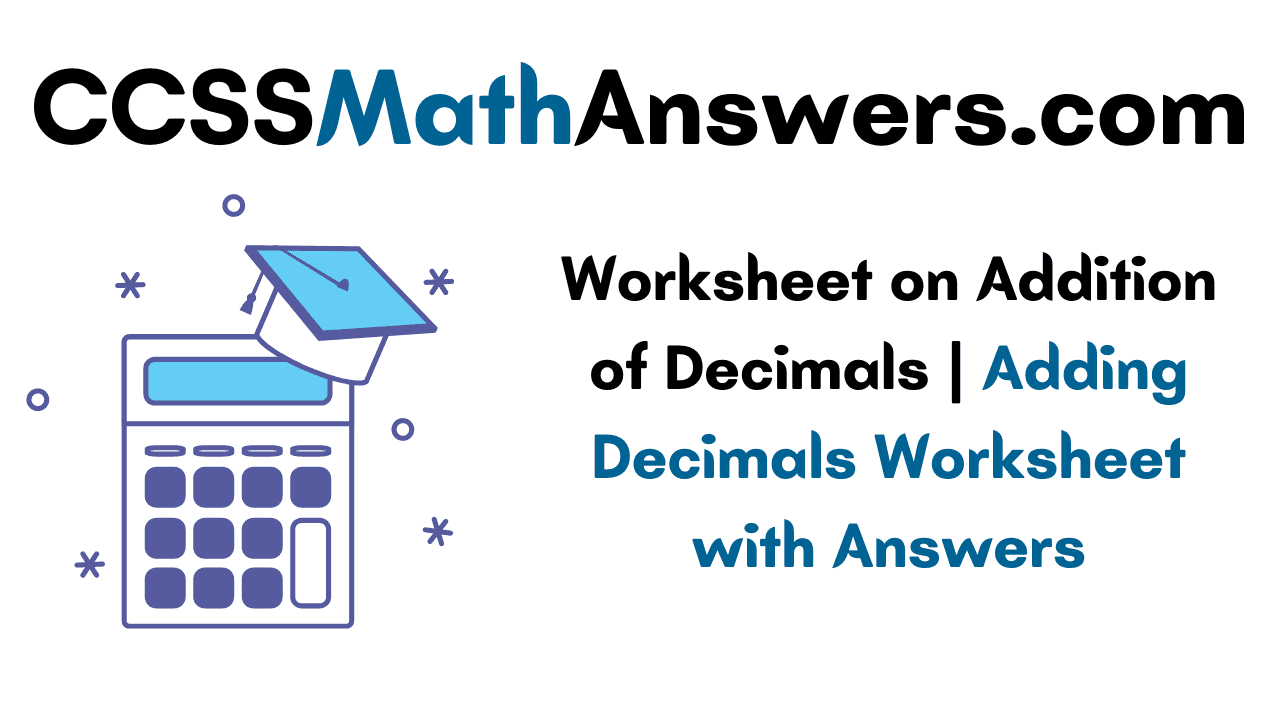
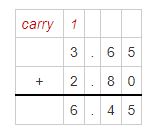
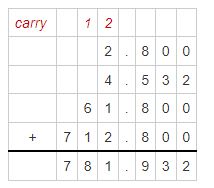
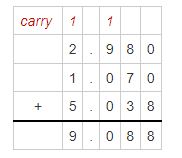


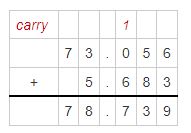

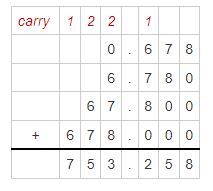
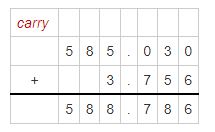
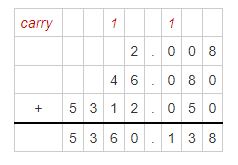

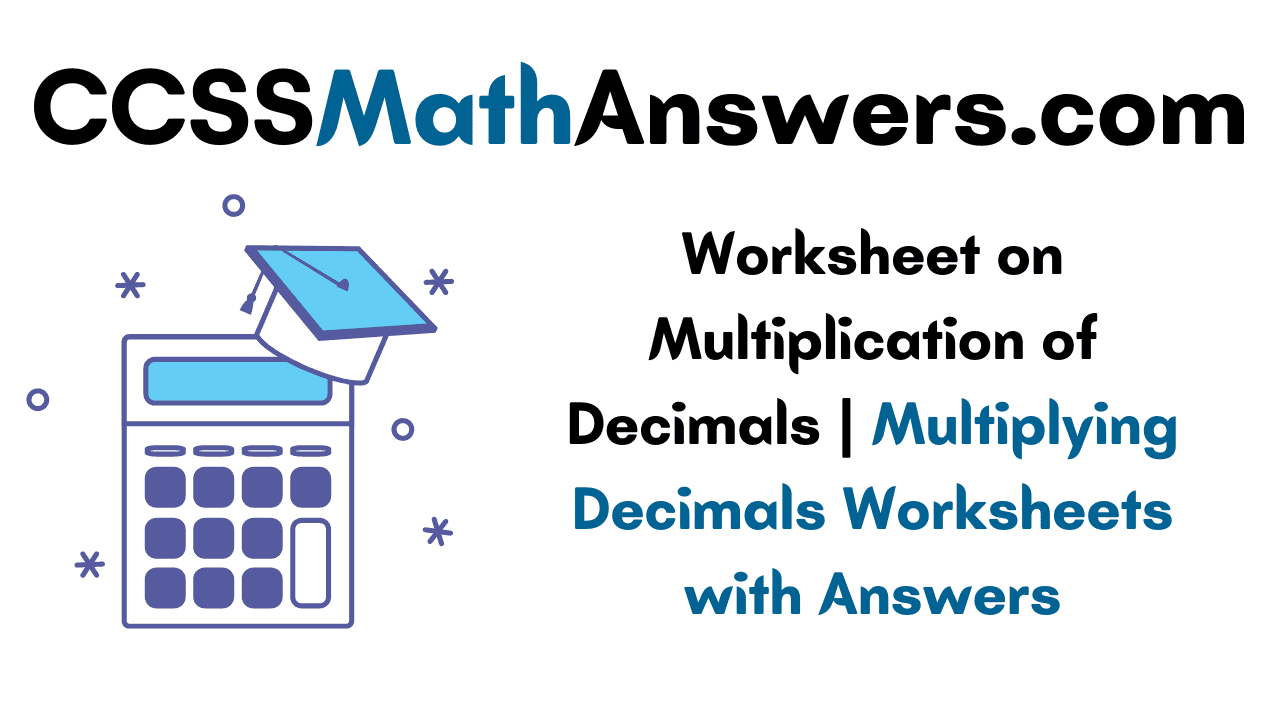
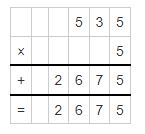

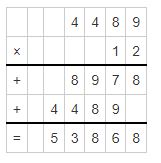

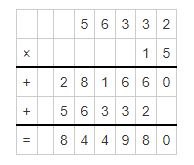

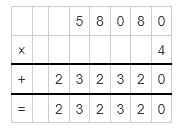

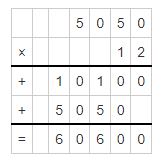
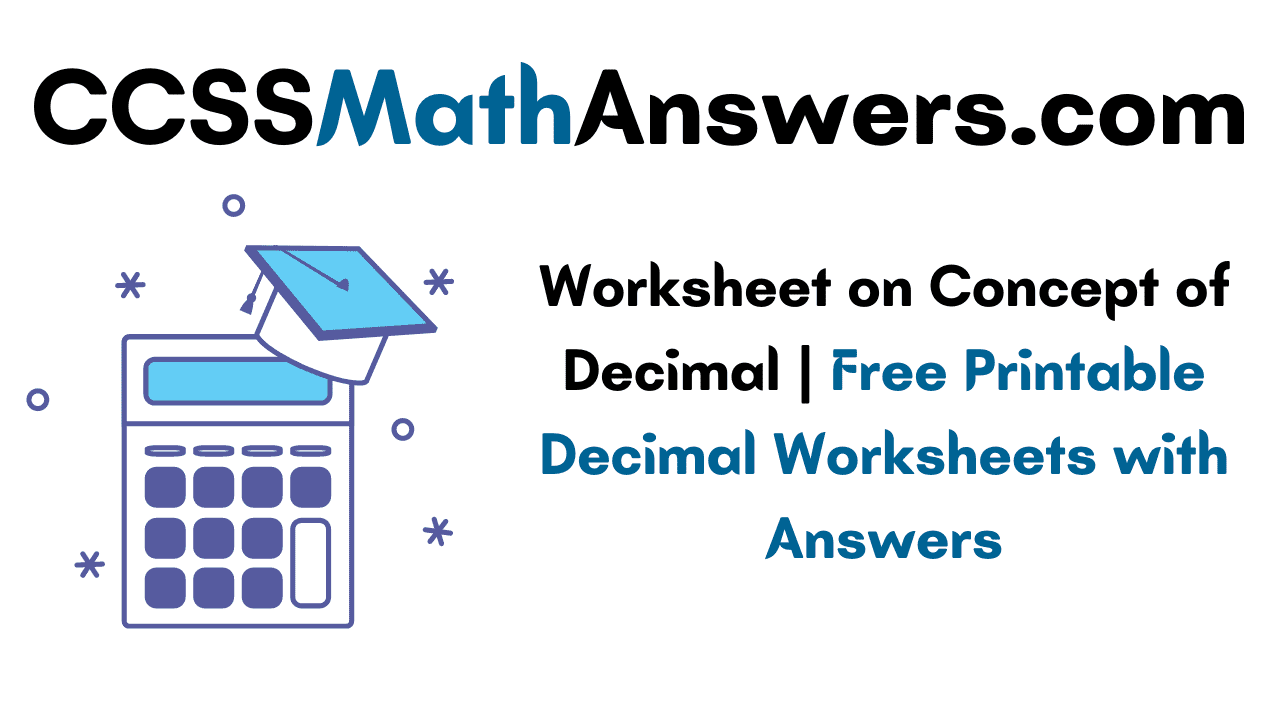
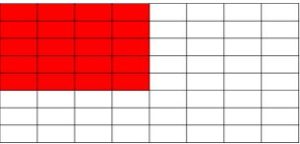
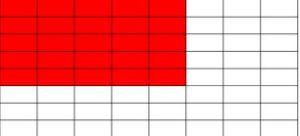

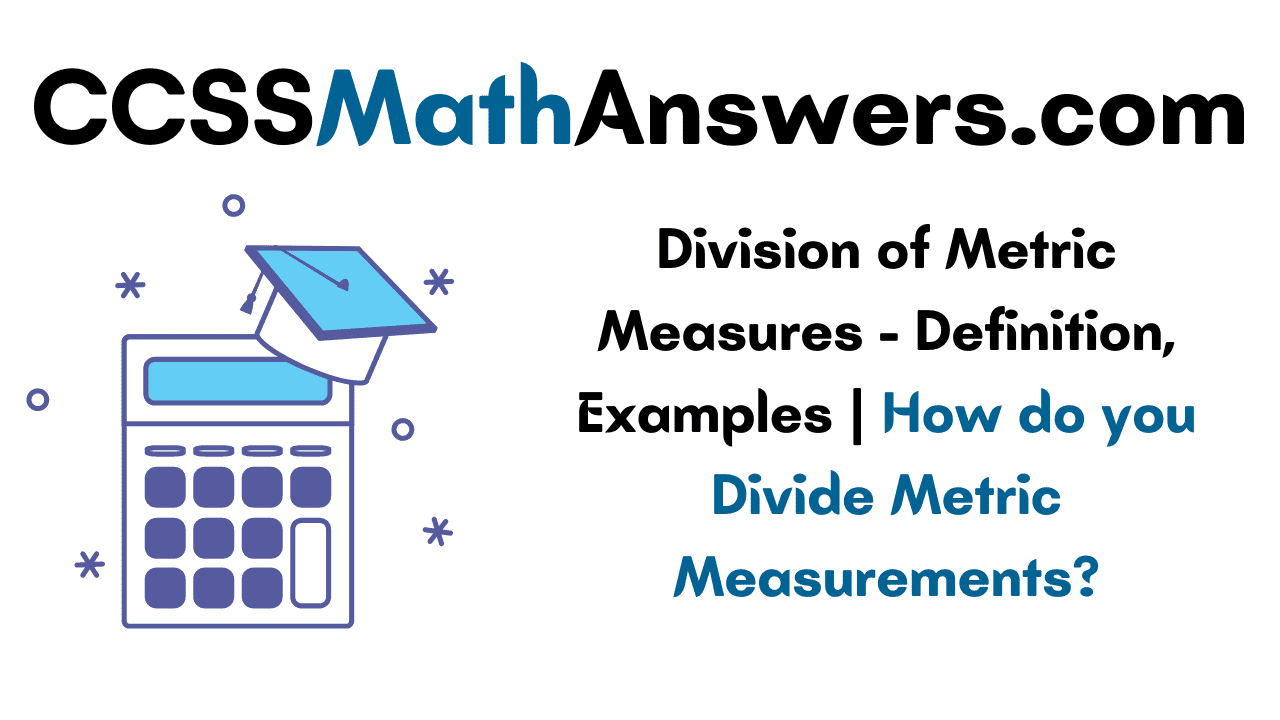
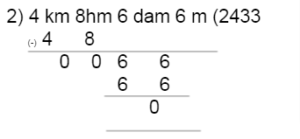 After performing the division we get the remainder as 0, and the quotient as 2433.
After performing the division we get the remainder as 0, and the quotient as 2433.